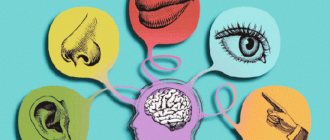When meeting with friends and girlfriends, you usually immediately understand how they feel. Life experience helps you do this. However, sometimes emotions and feelings turn out to be deeply hidden or hidden in such a way that no matter how hard you try to read them, it is impossible to understand them.
To better understand the emotional world of another person, read everything about the manifestations of emotions and feelings, their characteristics in psychology, examples, features. Knowledge of external and non-verbal forms of manifestation, even if they appear for a moment, will allow you to quickly respond to a person’s well-being, provide him with support or rejoice with him.
In this article:
JoySadnessInterestFearAnger
Joy
Photo by Brock Wegner on Unsplash
It’s worth starting with, perhaps, one of the brightest emotions – joy. Nothing can compare to the first smile of a newborn, the joyful, happy laughter of a child. It is believed that this emotion is innate in nature and at the same time develops as a person grows older.
Sad, demanding parents, the need to survive in difficult conditions kills the desire to enjoy life. But supporting the child, constant laughter in the family, and developing a sense of humor contribute to a more positive outlook on the world. The reasons for joy can be anything - bright sunshine finally emerging from behind the clouds, meeting with friends, delicious tea or new discoveries.
Joy is experienced as a pleasant state, fullness of happiness, satisfaction. It makes you feel more confident and active. Reduces anxiety and impulsiveness. Experiencing too much joy can cause insomnia.
It is almost impossible to hide a joyful state. A person glows with happiness, sparks penetrate through the pores, ignite those around him. The main external signs of this emotion:
- A sparkle of happiness shines in the eyes;
- There is a smile on the lips, and if a person tries to hide it, the corners of the mouth are slightly raised;
- A smile makes your cheeks rise, your eyes narrow slightly;
- Small wrinkles appear around the eyes; sometimes they are called "crow's feet";
- Forehead – smooth, without wrinkles;
- The movements are more active than ever;
- Posture is straight.
How to Accurately Express, Distinguish, and Understand Emotions
A necessary component of understanding another person is understanding their emotions and feelings. Mastering the language of emotions requires mastering the generally accepted forms of their expression, as well as understanding the individual manifestations of emotions in the people with whom one lives and works. Distinguishing emotions is more difficult than expressing them. Emotions and feelings are quite difficult to understand, since for each person they arise from an individual semantic context. However, it is important to understand them because emotional reactions are unmistakable indicators of the true attitude to what is happening.
Normally, a person should be able to express his emotions according to situations and, as necessary, direct them either to himself, or to his partners, or to the activity in which he is engaged, or to the objects with which he acts. The one-sided focus of emotions (for example, only on oneself) impoverishes the personality.
The ability to express and recognize emotions is a prerequisite for social adaptation. Goleman cites the results of research by the American psychologist S. Nowitzki, who studied the ability to nonverbally express emotions in children. It has been established that children who are unable to “read” the emotions of other people or adequately express their own emotions non-verbally are constantly in a state of frustration because they do not actually understand what is happening in interpersonal communication. Children with such disorders experience social isolation. Such students begin to lag behind in their studies, although they have an average level of general intelligence.
The degree of emotional expressiveness affects the quality of interpersonal relationships. Thus, excessive restraint leads to the fact that a person is perceived as cold, indifferent, arrogant, thereby causing surprise or hostility among others, while excessive expressiveness can cause bewilderment and irritation in the interlocutor.
The formation of facial expressions of emotions, according to J. Reikovsky, is influenced by three factors:
- innate facial patterns corresponding to certain emotional states;
- acquired, learned, socialized ways of expressing feelings;
- individual expressive characteristics.
External manifestations of emotions, which are a synthesis of involuntary and voluntary methods of response, largely depend on the characteristics of raising children. Children learn from watching adults what facial expressions correspond to different emotions. Rules governing the expression or suppression of one's feelings help to strengthen, weaken, or disguise the expression of emotions. A. von Kanitz gives the following examples of the application of these rules.
- When amplified, an emotion is expressed much stronger than the person actually experiences it. Remember how you expressed joy when receiving a gift that did not seem so good or necessary.
- Weakening leads to the fact that the expression of feelings is reduced, since in a given situation it is inappropriate (for example, gloating or anger at the boss).
- Neutralization is an attempt not to express a feeling. The “poker face” speaks of an impenetrable facial expression - this is the facial expression of a poker player. He needs to hide his emotions so as not to lose.
- Disguise - a person tries to demonstrate not the feeling that he actually experiences, but another. Thus, he may appear cheerful while hiding anger or embarrassment.
Children learn the rules of expressing emotions through adults' reactions to their behavior. Six-year-old Mashenka often cries when something doesn’t work out for her. For example, today she can’t seem to come up with the letters that the teacher asked them to write in the notebook. Mom would like to help, but she has no time. Running from the kitchen to the TV, my mother shouts: “Stop crying! If you don’t stop crying and don’t do your homework as expected, you won’t go for a walk. Look, I'll check!" But Mashenka’s sadness is real, she is not pretending. The mother teaches the girl that negative emotions must be suppressed. Masha will learn to weaken her emotions, push them inside herself and will be unhappy. But the help and support of a loved one would help the girl restore her peace of mind.
Often adults tell children: “Stop it, don’t you dare behave like that, you will be punished!”, “Don’t make noise!”, “Stop jumping around and whining!” However, hidden emotions will always find a way out - in the form of psychosomatic symptoms. Children often have speech impairments, they quickly get tired and get sick. It seems to adults that the child should not have any special experiences or problems, and they deny children their right to be angry, jealous, and sad. The child also finds himself in difficult situations, which means he has the right to feelings.
Five-year-old Alesya is very angry with her three-year-old brother: he tore her favorite picture book. She is ready to give him a good time! But the mother hugged the girl and said: “Alesya, I see that you are very angry. You're breathing so hard. Come to me, let's calm down a little. You saw how calmly our kitten breathes in his sleep. Let's breathe like him: deep and slow. Watch me do it. Have you calmed down a little? Now tell me what happened to you?”
Conventional rules for the expression of emotions (display rules) depend on the cultural characteristics of the nation: the expression of emotions on the face is subject to the double influence of universal, biologically innate factors and learned rules of expression specific to a given culture. For example, there is a well-known tradition of English upbringing not to reveal one's emotions. A Japanese, when with other people, tends to mask his negative emotions with positive ones much more strongly than an American.
- Collectivist cultures promote the manifestation of more positive and less negative emotions towards “insiders”, because intra-group harmony is much more important for a collectivist society.
- Individualistic cultures support the expression of negative emotions more and less often positive emotions in the “in-group”, since harmony and cohesion are less important for such cultures.
J. Reikowski gives the following reasons for difficulties in expressing emotions:
- failure to assimilate forms of expression accepted in society;
- fear of revealing one's own feelings, associated with fear of loss of self-control or fear of censure from others (fear of being compromised, rejected or ridiculed);
- innate factors, although the learning process plays a decisive role;
- mastering the norms of behavior prevailing in the family and immediate environment.
How to share your feelings with another person? Where to begin? If you want to express your emotions to another person, then you need to choose a time and place when he can really listen to you. Then you need to get his attention.
The following can be used as starting phrases.
- "I'd like to talk to you about... Is now a good time?"
- “I have a problem—can I share it with you now?”
- “Something is bothering me. Can I talk to you about this?
- "I need your help with..."
- “I really feel (hurt, angry, sad, worried, scared...)”
Keep in mind that when you share your feelings, many people want to help you feel “better” or start giving you advice. Doesn't this suit you? Then say what you really want: “I want you to listen to how I feel. I'm not looking for advice or reassurance, I just want to speak out. Are you ready to listen to me?” If your interlocutor begins to console or advise again, remind him: “I just want to tell you how I feel.”
The ability to express emotions is related to their differentiation. From an evolutionary point of view, it was important that people were able to differentiate emotions - not only their own, but also those of others. Such abilities ensured successful interpersonal cooperation.
Mastering the language of emotions requires mastering the forms of their expression generally accepted in a given culture, as well as understanding the individual manifestations of emotions in the people with whom one lives and works. Distinguishing emotions is more difficult than expressing them.
In order to recognize your own emotions, you need to direct your attention inward. Take a moment away from the outside world and focus on self-perception. This process is similar to mental arithmetic. So, if you need to multiply 25 by 17, you will briefly disconnect from the external world, count, and then switch your attention again. The perception of emotions occurs in a similar way: you switch your attention from the external world to the internal and concentrate on the perception of the emotions of a given moment. Your inner world, your emotions when assessing the situation are no less important than the arguments of reason.
Shall we practice? Disconnect from reading for a moment and concentrate on your inner state. Try to answer the questions: How am I doing now? How am I feeling? First of all, pay attention to your physical well-being (body tension, breathing, feeling of lightness/heaviness, energy). If you find yourself feeling good, your satisfaction will only increase. If the test results are unsatisfactory, try to understand what is wrong. Perhaps you are missing something? Is something stopping you?
When recognizing one's own emotions, the leading feature is the subjective experience of emotion. Recognition of other people's emotions is carried out mainly by external manifestations of emotions, i.e. by facial expressions and pantomimes, changes in speech and voice, behavior, and vegetative reactions. Among the channels for transmitting emotional information, two main ones can be distinguished: firstly, facial expressions and pantomime, and secondly, speech.
By facial expressions, people quite accurately identify emotions such as joy, surprise, suffering, anger, worse - contempt (it is often identified with anger) and fear. It is easiest to identify holistic facial expressions, which correspond to changes in all areas of the face simultaneously. The most difficult to identify facial expressions in the forehead area is the movement of the eyebrows (in half of the cases the emotions were not recognized). Emotions are recognized twice more accurately by changes in the eye area and lower part of the face. Ch. A. Izmailov believes that the primary physical parameters by which an observer distinguishes emotions are the curve of the mouth and the tilt of the eyebrows. At the same time, different emotions have their own optimal identification zones. Thus, the expression of the emotions of fear and grief is more easily identified in the eye area than in the lower part of the face; the expressive characteristics of anger and calmness are found to a greater extent in the forehead-eyebrow area. The average accuracy of emotion identification increases with increasing strength of facial changes and does not depend on their localization.
When recognizing emotions, it is necessary to take into account antecedents - what precedes the emotion and is its cause, that is, the situation itself in interaction with the information available to the person.
For example, the Kuleshov effect is known in cinema. He filmed Mozzhukhin, a famous silent film artist of his time, with a neutral expression on his face and edited a close-up of his face with a coffin, a plate of soup on the table and a girl. Viewing these frames showed that viewers evaluate facial expressions and a person’s state of mind in the next frame differently depending on the previous one.
Kuleshov’s famous experiment showed that the same close-up of Mozzhukhin’s indifferent face can express hunger, paternal love, or grief, depending on what is shown in front of him: a plate of soup, a playing child or a coffin.
Consequently, if the observer has information about the situation in which the observed person finds himself and his goals at the moment, then it is not difficult to recognize an emotion by its external manifestations.
In the perception of the emotions of others, conditioned reflex connections formed in the process of individual development between the situation and the accompanying emotion, and the effect of causal attribution (attributing reasons for behavior to a communication partner) are of great importance.
There are no clear connections between an emotion and its external expression. According to research by N. D. Bylkina and D. V. Lyusin, people react differently to the same situations, even if they have the same goals. Therefore, to identify the emotions of others, it is necessary to take into account additional information about such intermediate variables (mediators) as the individual characteristics of a person, the cultural characteristics of the community to which he belongs, and the current physical and mental state of the observed person.
The accuracy of emotion recognition from speech is influenced by the following factors:
- the speaker's ability to convey emotional states in speech. According to I. A. Pereverzeva, the more a person is prone to negative experiences, the more he is inclined to control their expression and the more difficult it is for an observer to recognize them. A person prone to positive emotions controls them less, and his emotions are more easily recognized by communication partners. According to the researcher, this phenomenon is associated with the result of the assimilation of social norms, since the expression of negative emotions is not approved by society;
- sign, the morality of the presented emotion and the individual experience of people in recognizing experiences. The easiest to determine is the state of joy, then admiration, the worst is the state of curiosity; intermediate positions in accuracy were occupied by the states of indifference, surprise, resentment, melancholy and anxiety. A tendency was revealed for better recognition of positive emotional states compared to neutral and negative ones. The most sensitive to the emotions of others and the most adequately recognize them are subjects whose dominant emotions are sadness and sadness. Thus, people who themselves experience negative emotions learn to more accurately determine the corresponding emotional states of others and take them into account in interaction, strive for contacts with those who experience emotions of sadness and fear;
- personality traits. Distinguishing emotions is related to the level of development of empathy. According to Rogers, the empathic way of communicating with another person has several facets. It involves entering the personal world of another and constant sensitivity to the changing experiences of the communication partner. It is like living another life temporarily, delicately living in it without judging or judging, meaning grasping what the other is barely aware of. To be empathic means to be responsible, active, strong and at the same time subtle and sensitive.
The emotions of other people are better recognized by persons whose characteristics belong to the follower type. R. Cattell's questionnaire diagnoses their traits of dependence, anxiety, conformity, and increased sensitivity. V. A. Labunskaya found that emotions are better recognized by people with developed non-verbal intelligence, emotionally mobile, more directed at others than at themselves.
Sensitive, anxious, easily vulnerable, insightful, and cautious subjects in contact with people are more capable of recognizing emotions in speech. In addition, people who are uncommunicative, emotionally unstable, with developed imaginative thinking, and older people are more successful in recognizing negative emotional states.
The accuracy of recognition of the modality of emotions and the assessment of the intensity of their manifestation are influenced to a certain extent by cultural characteristics. Thus, in a cross-cultural study by Yu. V. Granskaya, it was shown that students from Russia were significantly more successful in recognizing fear, sadness, surprise, disgust, and less successful in recognizing happiness, anger, and joy. The author explains the decrease in sensitivity to a number of emotional states, which is characteristic of Russian students, by the circumstances of their lives, which determine a more positive interpretation of the emotion of anger. Americans were better at recognizing anger, disgust, fear, and sadness than Japanese, but the level of accuracy in recognizing happiness and surprise was no different.
Of interest are cultural differences in key features of emotion. So, if Arabs most often recognize emotions based on the expression of their eyes, then Slavs pay main attention to the lips of their interlocutor. Arabs tend to single out two stable emotions in facial expression - happiness and sympathy, while among Slavs the triad predominates among positive emotions: happiness, sympathy, delight. At the same time, in the continuum of negative emotions, Slavs regularly highlight disgust and envy, while Arabs primarily highlight fear.
In addition to emotional signals given by the voice and face, there are also emotional impulses to physical action. With anger and some types of pleasure, an impulse arises to move towards the source of the emotion. With fear - numbness or impulse to escape from a potential source of danger. The impulse to escape, although less strong, also arises during disgust. When a person is sad, there is a general decrease in muscle tone: the person hunches over and remains motionless for a long time. In the case of contempt, an impulse arises that forces you to look down on the one who caused this feeling. Surprise causes us to fixate our attention on a seemingly unusual object. When receiving tactile sensory pleasure, movement is observed in the direction of the source of stimulation. Laughter that accompanies wild fun causes repeated body movements along with characteristic spasmodic phenomena.
Of interest are the physiological changes that prepare a person for a certain type of emotional reaction. In a person experiencing anger, blood rushes to the hands, warming them and preparing them for some action towards the object of anger. When we feel fear, blood rushes to the legs, which prepares the leg muscles to flee. With fear and anger, sweating increases; these same emotions and suffering lead to increased breathing. Why do your hands sweat when you're afraid? According to Darwin, this makes evolutionary sense: for example, it is easier for a monkey to grab onto branches to escape from a frightening object.
According to Yu. V. Saenko, there is a certain balance between vegetative and muscular reactions. Thus, if anger is suppressed, then autonomic reactions (for example, increased blood pressure, increased heart rate) will be much stronger than during an affective outburst. And vice versa: physical activity reduces vegetative manifestations of emotion.
Muscle tension and stiffness of movement may indicate unresolved emotions. These signs are typical for people suffering from various conflicts and neurotic disorders.
Reasons for difficulty understanding individual differences in other people's emotions include:
- focus on one’s own personality, which leads to an inability to notice and correctly assess the emotional state of others;
- feeling of superiority;
- feelings of anxiety associated with the emotions of others or one’s own; anxiety encourages you to avoid everything that could cause emotions;
- any benefit from not understanding the emotions of others;
- insufficient knowledge of the other person. According to Rubinstein. “...we learn to recognize the individually unique movements of each person and from them to capture all the shades of his feelings, correctly interpreting his expressive movements, only in the process of more or less long and close communication with him”;
- the phenomenon of “psychological defense”: patients in a state of depression identify intonation signs of low mood worse than standards of other emotions.
Insincere facial expressions can be exposed in many ways. Usually they are slightly asymmetrical and their appearance and disappearance from the face occurs too abruptly.
More than a hundred years ago, the French neurologist Duchenne de Boulogne discovered that a real smile of pleasure differs from insincere smiles. When a person experiences real pleasure, he not only smiles, but also activates the muscles that surround the eyes. Each of these muscles consists of two parts: the inner part, which tightens the eyelids and the skin directly below them, and the outer part, which controls everything that is located around the eye socket, namely: pulls the eyebrows and the skin under them down, pulls the skin under the eyes up and raises his cheeks. In this case, the familiar “crow’s feet” are formed. The muscles, called the orbicularis oculi, are practically not subject to will: according to Ekman, only about 10% of the people he examined could deliberately cause them to contract.
For example, when a stranger approaches a ten-month-old baby, his smile will not involve the muscles around the eyes. But if a mother approaches the baby, he will smile at her with a genuine smile of pleasure, which was named Duchenne’s smile in honor of the outstanding French scientist. When happy lovers meet in the evening, their smiles are created with the participation of the orbicularis oculi muscles, the smiles of unhappily married spouses arise without the participation of these muscles.
Another sign of a fake smile is an asymmetrical smile that is out of place: a little earlier or a little later than necessary. If the artificially smiling person is right-handed, then the left corner of the mouth will be raised higher.
* * *
A necessary component of understanding another person is understanding their emotions and feelings. The importance of this understanding is due to the fact that emotional reactions, being closely related to the motivational and value-semantic spheres of the individual, are unmistakable indicators of the true attitude to what is happening. Understanding emotional states helps to optimize communication and is a necessary moment of awareness and assessment of one’s personal qualities and actions through the prism of social values.
Emotions and feelings are quite difficult to understand, since for each person they arise from an individual semantic context, and are later included in it as the main components of its content. The existence of such an individual context can make it difficult to understand another's experiences.
The most effective way to overcome the boundaries between the individual semantic contexts of communication partners is empathy, which can be defined as the ability to:
- react emotionally and respond to the experiences of another;
- recognize the emotional states of another and, as it were, transfer oneself into his thoughts, feelings, actions;
- give an adequate empathic response (verbal and non-verbal) to the experiences of another, use methods of interaction that alleviate his suffering.
The highest level of awareness of emotions is not only the correct identification of an emotional experience and the ability to describe it, but also an understanding of the reasons for its occurrence and context.
Since understanding emotions consists of clearly recording one’s emotional state and being able to express it in a symbolic form, it is associated with the verbalization of emotions. At the same time, experiencing an emotion and naming it (defining it) are different phenomena. If an emotion is recognized to a sufficient extent, then it can be categorized (designated, named).
In order to name an emotion, it is necessary to have a fairly rich emotional thesaurus. Its content, firstly, depends on the representation of a given emotion in language. An emotion is represented to a greater or lesser extent in language depending on how important and desirable it is considered in a particular culture. The national language, in turn, shapes the surrounding reality. This means that we may be blind to phenomena or concepts for which we do not have words.
For example, in Tahiti there is no word to express the emotion of sadness. For this reason, a mother, having lost a child, perceives tears and her physiological state as an illness, without connecting it with mental pain. In Italian, there is a word “fiero” that denotes the pleasure of facing a difficult task. At the same time, the name for such an emotion was not found either in English, or in Belarusian, or in Russian. In English there is no concept corresponding to the Russian word "schadenfreude". The Japanese language has words for emotions such as longing for an absent loved one; the feeling associated with seeing another person worthy of praise who overcomes obstacles; they do not have an exact English translation. The emotion, designated in Russian by the word “despair”, has a number of shades in the Belarusian language: “rospach”, “panyaverka”, etc.
The richness of a child's emotional thesaurus also depends on the emotional vocabulary of significant adults, primarily parents. According to materials from cultural and historical research, in earlier periods both adults and children could express their feelings more freely, and the presence of significant emotional material for analysis and attention to it contributed to a more effective understanding of experiences.
It is known that one of the most important features of medieval man was pronounced emotionality. In the Middle Ages, man, according to historical sources, appears to be extremely sensitive. Emotional reactions such as tears, sobs, wringing of hands, and fainting are common not only among women, but also among men. Medieval people loved bright, contrasting colors. He was attracted to the dramatic. often bloody spectacles.
Modern man has seen a reduction in his emotional vocabulary. This may be due to the ban on expressing those negative emotions in children that adults consider uncomfortable and unacceptable. Let us note that since the middle of the last century, adults have been trying to forcibly cleanse the child’s world of negative emotions, unpleasant sensations and experiences. Joy is considered the healthiest affect, so its manifestations are stimulated in every possible way by quickly switching the child away from tears and unpleasant experiences. Parents rarely talk to their children about emotional life. Adults rarely have to deal with the subtle differentiation of emotions in everyday life.
We studied what words modern students use to express fundamental emotions (joy, grief (suffering), fear, guilt, anger). It was found that to express emotions, students often use not only generally accepted vocabulary (it is quite poor), but also jargon: joy - “cool”, “high”, “sausage”, “respect”, “curly”, “ottyag”, “ distension"; grief - “pitchfork”, “bad luck”, “shovel”, “kumatosis”; anger - “tore down the tower”, “besezh”, guilt - “ram”, fear - “something is pushing me”, “striving”.
The reason for the decreased attention to internal events may lie in cultural norms that limit the expression of emotional life. “In the course of long-term and systematic control over people’s consciousness, paradigms were introduced into it that blocked deep feeling. One of them says: “You don’t need to feel, it will lead to pain...” A person thinks that if he allows himself to experience feelings, negative, bad feelings will most likely come, and other people will stop liking him.
Inattention to emotional life leads to sad consequences. Parents' ability to recognize and help manage their children's negative emotions is known to make children more effective at regulating their emotions over time, resulting in more positive behavior. In turn, the poverty and undifferentiation of the mother’s emotional vocabulary leads to the formation in the child of a special type of consciousness and thinking, in which emotional life is poorly represented.
The following exercise will help you expand your emotional thesaurus. Think about what emotions and feelings these words express: quiver, rage, impress, torment, warp, sag, fly, dreary, bliss, confusion, overwhelm, take wing, become frantic, cock, get stuck, prostration, tenderness, pinch, ardent?
Recognizing and understanding the meaning of emotions is problematic for individuals with severe alexithymia. The term “alexithymia” (“feeling without words”) was introduced by the American psychiatrist P. Sifnes in 1968, although the phenomenon behind it was known to doctors before.
Social causes of alexithymia include family prohibitions on expressing feelings, as well as the desire for maximum social adaptation and rigid adherence to social norms. A person neglects personal needs in favor of group (family) demands, and since emotions are a subjective form of expressing needs, he has to sacrifice his own experiences.
An interesting example of alexithymia was discovered by S. Goldberg in W. Shakespeare’s work “Hamlet”. The main character talks a lot, argues with himself. However, in contrast to the purpose of language as a carrier of meanings expressing a person’s intentions, desires and feelings, Hamlet’s statements do not lead to better mutual understanding and harmonization of relationships. Words essentially replace interpersonal relationships for him. The reason for the inability (or fear) of close emotional relationships is that in early childhood, father and son did not have the opportunity or desire to openly express their feelings and needs using meaningful words. The feeling of shame in front of the father was later transferred to relationships with others.
It can be argued that a completely mentally normal individual, but who does not have the skill of verbalizing emotions, is to a certain extent susceptible to alexithymia. If its level is elevated, this indicates problems in the emotional-intellectual sphere and is a contraindication for professional activities in the field of communication. The latter is quite understandable. A person who has difficulty identifying his own emotional states is unlikely to be able to verbalize the emotional states and properties of his partners.
Adequately deciphering a partner’s emotional signal means grasping exactly the meaning that was invested in it. This skill is subject to the following conditions:
- a person must have sufficient experience of communicating with people of different ages, different mental makeup, cultures, and different nationalities. In developing the ability to understand emotions, close contact between a person and pets is of great importance;
- the presence of a significant amount of operational emotional memory allows you to remember the nature and shades of your partner’s emotions directly at the moment of communication;
- It is important not to attribute shades to your partner’s emotions that are not actually present in them. The causes of this kind of distortion may be “noise” in the form of moods or habitual emotions, defects in operational emotional memory, attitude towards a partner, mental deviations in the perceiver. For example, individuals with a paranoid personality type tend to interpret the motives of others as malicious. With this approach to people, joy is easy to identify with schadenfreude;
- The greater the experience of professional communication with a certain category of people, the more accessible is the decoding of the emotional states of subjects of professional activity.
The difficulty in interpreting emotional messages is that the emotion may not be accurately encoded or decoded. To understand the feelings of a communication partner, you can use the “separation technique” known in psychology, the essence of which is to separate the designation of the experience from the experience itself. In the process of using this technique, a comparison occurs between the state in which the subject finds himself and the concept with which he denotes his state. To do this, we require more and more detailed descriptions of the experience experienced, until the person begins to introduce other designations in his story.
For example:
— I’m scared to give a report at a conference. -What do you mean by fear? - Well, I feel some excitement... - So do you feel fear or excitement?
* * *
Let's imagine that you recognized the feelings of your communication partner. But how to use this information?
The presence of information about the feelings experienced by a person, according to Ekman, says nothing about how to act. It does not give you the right or obligation to tell the person that you know how they feel. You have different options depending on who the person is, what kind of relationship you have with them, and what the current situation is.
- When you notice an expression of sadness on your interlocutor's face, in some situations it may be useful to simply express regret for the disappointment caused to the person. If a slight expression of sadness appeared on your friend's face when he told you about bad news, then you can verbally express your disappointment, express sympathy for his difficult situation and give him the opportunity to express his feelings more fully. If we are talking about a teenager, then it may be wiser to give him a chance to figure out what happened himself by simply asking: “Are you okay?” or “Do you need any help?”
- When the person you're talking to is showing fear, you can say, "Would you like to talk to me about something specific to the current situation?" or “I feel like we need to talk more about this.” If you see an expression of fear on the face of someone close to you, you can simply say: “I sense that something is bothering you. Is there anything I can help you with?
- If you see disgust on your interlocutor's face, say something like: “I understand that my decision may have upset you. Perhaps I can provide some clarification or discuss other issues with you?” If your teenage daughter feels disgust or contempt for your words or decisions, you can comment: “Do you think I’m being unfair to you?” or “Are you tired of dealing with me?” Allow her to fully express her feelings, then try to calmly explain your feelings and actions, avoiding harsh words.
- When your interlocutor is angry, you should not provoke him with questions like: “Why are you angry with me?”, “Are you unhappy with something?” It is better to say: “My decision may well have displeased you, and I regret it. Tell me, is there anything else I can do to help you?” Another option is to tell the other person, “I would be happy to talk with you now or later about how you took this news.” By not using the word “anger,” you reduce the likelihood of anger being expressed in inappropriate ways while also giving the person a chance to talk about their problems later, when they are ready to do so.
Irina Nikolaevna Andreyeva
— Candidate of Psychological Sciences, Associate Professor, Doctoral Student of the Department of Psychology, Faculty of Philosophy and Social Sciences of the Belarusian State University, Associate Professor of the Department of Technology and Teaching Methods of Polotsk State University, Expert of the Elitarium Center for Distance Education
Sadness
A kind of antipode to joy is sadness. This emotion is often classified as negative; it can lead to passivity; associated with disappointment and a feeling of misfortune. Appears when a person feels loneliness and guilt. A sad person is focused on dullness and unpleasant events. This emotion is often called the key emotion in the development of depression.
But objectively, sadness can also play a positive role. It calms and opens up space for reflection and decision making.
A person may have an innate tendency to experience sadness and sadness. For others, this emotion arises under the influence of events in the surrounding world. So, it's hard to jump for joy if you've been fired or your child is sick.
People try to hide sadness and it is not always possible to be sure that this is the emotion they are experiencing at the moment. But if you watch a person for a long time, you will see the following manifestations:
- The inner tips of the eyebrows are slightly raised;
- The lips are lowered at the corners of the mouth;
- There is sadness in the eyes; they may be slightly narrowed;
Emotions: functions, intensity, basic emotions
- Horizontal wrinkles appear on the forehead;
- The back is hunched;
- Movements and speech are slow.
What can happen when using emotions incorrectly?
First of all, you need to understand that if a person behaves aggressively and shows negativity too often, then by doing so he only destroys his own life. Gradually, the people around him will get tired of him behaving this way, and they will begin to move away from him. Therefore, such people have a much higher risk of ending up completely alone.
Someone who is always dissatisfied, aggressive and hates the whole world around him, as a rule, gets sick much more often than a more positive person.
Interest
The basis of human development and his intellect is research activity, excitement, which can be described in one word - interest. This phenomenon is innate - after all, the child begins to react and pay attention to auditory and visual stimuli soon after birth.
At first, the reaction is unconscious in nature, associated with an unconditioned reflex. Subsequently, it becomes conscious and turns into motivation, thanks to which a person wants to study, learn new things, and explore the world.
Interest is especially pronounced when changes occur in the world around us, as well as with the person himself, and something new and unusual appears. Interest fades when everything around is familiar and boring. Perhaps, performing the same tasks at work every day, you began to feel melancholy and sadness.
But then a new, non-standard task with unknown conditions appeared, and you immediately woke up, felt the desire to tackle it, find a solution, and then take a walk in the city center. The novelty served as an incentive to return to an active life.
External forms of showing interest:
- Mouth slightly open;
- Slightly widened and sometimes narrowed eyes; in the first case, interest is associated with surprise, in the second - with an active thought process;
- Furrowed eyebrows;
- The body leans forward slightly;
- The gaze is directed towards the object of interest;
- With deep interest associated with excitement, the voice may tremble.
Correlation of concepts
Despite the existing differences, both types of mental manifestations are a way of expressing oneself and one’s attitude to the surrounding reality .
At the same time, feelings are a broader, complex and stable process that includes other manifestations.
The same feeling can be accompanied by different emotions . For example, a friendly attitude towards another person can be accompanied in the process of interaction by a whole palette of sensations: joy, mistrust, sadness, anger, boredom, jealousy, etc.
At the same time, the instability of momentary sensations, depending on specific circumstances, does not in any way affect the stability of friendship. That is, the object of friendship itself does not cease to arouse sympathy and be considered a friend just because a conflict has occurred in a particular situation.
Fear
New things are not always of interest. Sometimes the appropriate emotion is fear. It occurs when you worry about your safety, do not have sufficient information about what is happening, and lose control of the situation.
If interest, joy, even sadness are forgotten quickly, then fear pierces the heart so strongly that you will remember your emotions and the events that caused them for a very long time.
Fear is often confused with phobia and anxiety, however, these are all different phenomena. Fear always has a specific object - you can be afraid of wild dogs or heights. Anxiety is a feeling that occurs when you sense an unknown danger, are in the unknown, for example, waiting for test results.
A phobia is associated with an uncontrollable state that prevents you from moving or behaving adequately. As a rule, the phobia is based on severe stress, and not on the immediate danger posed by the object.
Signs of fear:
- Chaotic movements or, on the contrary, inhibition, inability to move;
- The feeling that a person is shrinking, trying to become smaller;
- Dilated eyes;
- Wary look;
- Eyebrows raised;
- Pale skin;
- The appearance of wrinkles on the forehead.
Determination of human emotionality
What kind of mood does a person have - types in psychology
A brief presentation of emotionality is as follows. A person reacts to different events, experiencing joy, fear, pleasure, disgust, etc. All this (a person’s mood, feelings, emotions) is psychology, which is designed to teach an individual to determine his condition and be able to control it.
Emotions developed during evolution; it is with them that living beings are able to assess the biological significance of events and phenomena around them. Experiencing positive emotions, a person is ready to repeat a certain event. When faced with negative experiences, he will avoid such situations.
Anger
A person often feels anger when he is disappointed, cannot achieve a goal, or encounters obstacles along the way. Emotion is associated with awareness of injustice, deception, hatred, humiliation, limitations. Few people can control anger. Having taken possession of you, it forces you to commit rash acts, enter into conflicts, and show aggression. Due to the huge number of negative consequences, the anger of a child or teenager in the process of upbringing is trying to calm down and redirect the energy in a calmer direction.
However, in some cases, anger can play a positive role - it mobilizes strength, forces you to move forward, helps you gather yourself, protect yourself and your loved ones.
The fact that a person is angry can be easily detected by non-verbal signs:
- Narrowed eyes, fire burning in them;
- The eyebrows hang over the eyes, sometimes connected at one point;
- A thickening appears on the bridge of the nose;
- The body is tense;
- The palms are often clenched into a fist;
- Noisy breathing;
- The man starts screaming;
- The voice is poorly controlled, broken, filled with anger.
A person experiences a variety of emotions every day. Joy is associated with success, a feeling of happiness. When it is impossible to achieve a goal, disappointment appears, anger and sadness appear. Novelty causes interest, and loss of security causes fear.
What is the difference?
These mental processes differ from each other according to the following criteria:
- Degree of awareness . An individual, experiencing emotions, cannot always give a clear description of his condition. For example, he may be restless, but not understand the essence of this restlessness. It can be caused simultaneously by fear, anxiety, anger, etc. Feelings are always clearly recognized. A person always understands for whom he has friendship and for whom he loves, when he is happy and when he is unhappy.
- Understanding the reasons . Emotion sometimes arises for no reason at all. For example, we suddenly feel sad and lonely, but there is no real reason for such feelings. Feelings always have a specific reason. We are friends with a friend because we find him interesting, reliable, and fun. We are proud of our husband because he is successful and handsome.
- Degree of stability.
Emotions are always tied to a specific situation, to the current moment in time.The joy experienced “here and now” from some event may already be irrelevant tomorrow. Feelings are characterized by stability. They are tied to a specific subject and are not exclusively related to the current situation.
External manifestation
Since there are so many classifications, it will take a long time to study their external manifestations. But for everyday life it is enough to know how the basic seven names manifest themselves. This will help you better understand others and allow you to correct your own reactions.
Recognizing emotions is often quite difficult, since a person rarely experiences one of them, usually several of them occur at once.
For example, when fear arises, a person may simultaneously experience shame, anxiety, self-dissatisfaction, or despair.
Also, recognition difficulties are associated with the fact that a person’s reactions are not always sincere; they are often designed for the surrounding audience.
Only a person is capable of experiencing a huge number of diverse mental processes. But in the modern world it is considered indecent to openly demonstrate one’s own experiences.
In addition, an open person becomes more vulnerable to others. On the other hand, forcibly hiding manifestations of emotionality, suppressing natural reactions, you can destroy the psyche .
Important! Suppressing natural emotions is harmful and is strictly not recommended. But you need to fight excessive emotionality
The least that threatens a person when natural reactions are suppressed is depression and various forms of neuroses. Also, when natural reactions are suppressed, the body’s endocrine system suffers.
This leads to hormonal imbalances and disruptions in the functioning of the thyroid gland and all other glands of the body.
As a result, the occurrence of physical and mental illnesses occurs. Therefore, suppressing natural mental reactions is harmful and is categorically not recommended.
However, some people are overly emotional. For them, repression occurs more slowly than accumulation. As a result, such a person quickly becomes irritated and an explosion of emotions occurs, characterized by a violent emotional reaction.
We must understand that this is an emotional reaction in which the volitional control of behavior weakens. This state makes it easier for a person to move to action. The phenomenon is short-term, after which powerlessness, complete apathy, and drowsiness appear.
You need to fight excessive emotionality. It is recommended to use physical exercises, screaming into a pillow, meditation and breathing complexes for this.
Happy love
Happy love does not tolerate any “buts”. It is a source of inspiration for partners, creates a feeling of security, but at the same time requires a lot of work on oneself and self-control. The main condition for happy love is openness and clarity while overcoming barriers.
If you feel any negativity, promptly track its cause and talk about it with your chosen one before resentment arises on this basis. Learn to conduct dialogue calmly.
Happy love is not only about finding and building relationships, but also about self-development. Behavior, well-being and reactions to the environment depend on harmony with oneself, satisfaction of needs and social experience.
With good mental health, it is possible to adequately assess what is happening, correctly recognize emotions and act in accordance with them. Developed empathy allows you not only to control yourself, but also to improve the quality of life of others, build positive relationships and achieve what you want.
Emergence
A person reacts to every situation in life with one reaction or another. It happens that in similar circumstances people react emotionally differently.
To understand how emotions arise, you should understand that this does not happen automatically, but due to certain factors and circumstances:
- specific situation. For example, in an offensive situation, resentment arises,
- the personality type and mood of the person at the time the situation occurred. In an irritated state, a person will experience irritation in most cases. Conversely, if a person is in a positive mood, most circumstances will cause him to react positively,
- a specific vision of a particular situation. For example, when a running baby suddenly falls, he may experience fear if he sees danger in this fall, cry with resentment if the fall seems offensive to him, laugh with joy if he perceives the fall as an adventure,
- obtaining internal benefits. For example, a naughty kid cries: his benefit - instead of punishing him, his parents feel sorry for him; during the argument, the mother-in-law's heart begins to ache: her benefit - the argument ends in her favor, the girl gets offended by the young man, and may burst into tears: her benefit - she gets what she wants .











